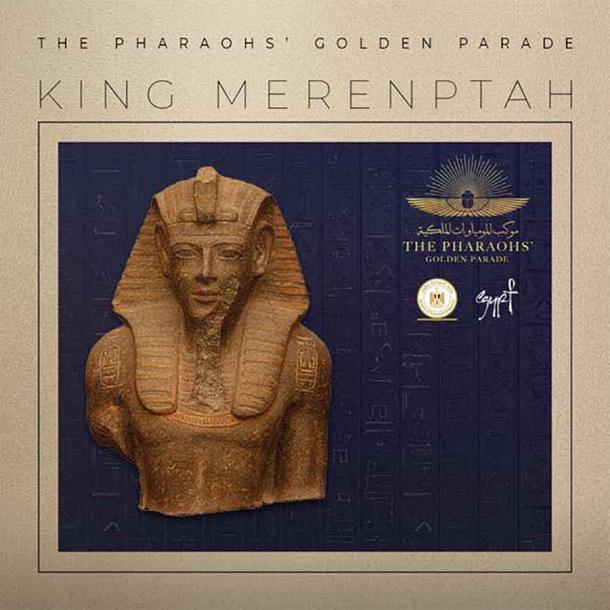Pharaoh’s Parade: Mummified Display of Egypt’s Glorious Past
When you utter the name “Egypt,” the first thing that comes to the mind is the storied past hidden in the deep recesses of fantastical pyramids. Not to forget, unending expanses of beautiful, golden desert. To commemorate this rich history, the Ministry of Tourism and Antiquities is organizing a Pharaoh’s parade on Saturday, April 3, 2021.
Egypt Today describes how the mummified remains of 22 former kings and queens will be showcased in front of the public of Cairo. The procession, which is called “The Pharaoh’s Golden Parade,” will begin at sunset at the historic Tahrir Square with a 21-gun salute, and then proceed along the Nile.

Queen Hatshepsut is just one of the pharaoh’s who will take part in the Pharaoh’s procession through Cairo. (Ministry of Tourism and Antiquities)
Pharaoh’s Parade in a Proud Celebration of History
The Ministry of Antiquities has proudly announced the grand parade, fit for royalty, will have 18 kings and 4 queens from the New Kingdom era, which ran from about 1539 BC to 1075 BC. They will be travelling in chronological order of reign to a new home. Housed for decades at the Egyptian Museum of Central Cairo, their new resting place will be the swanky National Museum of Egyptian Civilization (NMEC), inaugurated in 2017. NMEC is located in the ancient city of Fustat, now part of southern Cairo. The Ministry has also issued 22 royal commemorative stamps to mark the occasion.
- Hatshepsut: The Queen Who became Pharaoh
- Mummy of Pharaoh Ramesses II Issued a Passport to Travel to France

King Merenptah will be transported through Cairo. (Ministry of Tourism and Antiquities)
The who’s who of the ancient Egyptian civilization will make a (seemingly) final public appearance, each in a separate float designed in the Ancient Egyptian style. To carry them through this journey, the current crop of famed Egyptians will be assisting, including film stars, singers and dancers. They will be walking along the Nile, surrounded by guards on horseback, swarmed by the public (and television crews). When asked about the event, Zahi Hawass, archaeologist and former minister of antiquity, explained that “this parade will make all Egyptians proud of their country. In a time of COVID, they want to be happy, to feel proud of their ancestors. They will be waiting in the streets to say hello to their kings.”
Professor Salima Ikram, Professor of Egyptology at the American University in Cairo has provided assurance that the mummies will be upgraded to better casing. “The temperature and humidity control will be even better than it was in the old museum,” adds Ikram, a mummification specialist. This is for the purposes of better preservation, as well as providing recognition of their new surroundings. Gold-covered carriages fitted with shock absorbers are waiting and ready, so that the 40-minute journey does not rattle too many bones, quite literally!

The mummy of Seti I will also be moved to the new location at the National Museum of Egyptian Civilization. (ismeretlen magyar fényképész / CC BY 3.0)
Who are the Mummies in the Pharaoh’s Parade?
Egypt will be looking to avoid the alleged curse of the Pharaohs when the New Kingdom royals are disturbed from their current place of rest. Included in the parade will be the highly accomplished builder and leader, Queen Hatshepsut, who took over the throne at the tender age of 12, in 1520 BC. Defying the norm of male rulers, she proclaimed herself as pharaoh in 1437 BC. There will also be Ramesses II, known as “the Great,” to acknowledge the undisputed role of the New Kingdom’s finest ruler. During Ramesses II’s reign (1279 - 1213 BC), several military campaigns were launched and won, especially into the Levant. The Greeks have famously remembered him in sources as Ozymandias.
- KV20: The Famous Female Pharaoh Hatshepsut Has a Magnificent Temple, But What Became of Her Body?
- AI Technology Used to Recreate the Face of Biblical Pharaoh

Ramses I, II, and III will join the parade. (Ministry of Tourism and Antiquities)
Boy wonder Tutankhamun, who ascended the throne at nine and died at just nineteen and was popularly known as “King Tut” will also be a part of the parade. He died of ill health in 1325 BC, as a result of inbreeding and poor genes, but had a relatively successful reign. Other pharaohs, like Seti I, who Professor Ikram describes as “having great taste” and “being very handsome,” or Siptah Akhenre and Seqenenre Ta are also part of the mix. Siptah and Seqnenre both had unfortunate reigns, dying prematurely of polio and battle wounds respectively.
No Mummy’s Curse Surely?
Egyptians will be hoping that the ancient spirits aren’t angry about being shuffled around. After all, the freak Suez Canal crisis only just got resolved, along with a building collapse in Cairo and a near-fatal train wreck in Central Egypt. Hawass is quick to dismiss this, by saying “there is no such thing as a curse… just a lot of superstitious people.” He, in fact, is quick to point out that the new displays, with a sarcophagus on either side, will help both the people of Egypt alongside the rest of the world look at the mummies in an educational way, rather than as voyeurs.
For long, Egypt has debated and discussed the ethical dimensions of showcasing human remains on a public scale, especially with the ill-luck that seems to come from it. Whatever may be the case, the Pharaoh’s parade promises to be an extravagant spectacle, showcasing the history of one of humanity’s greatest civilizations – dating back over 3,000 years! You can watch the Pharaoh’s parade live here.
Top image: The Pharaoh’s parade is a stunningly inventive way to lift spirits during the Covid-19 pandemic, while transporting the remains of these ancient kings and queens to their new home. Source: Youtube Screenshot / Experience Egypt
By Rudra Bhushan



















